Pros
Cons
Introduction
Product Overview
{{section_header}}{{section.name}}{{/section_header}}
Meet the Tesla T1.
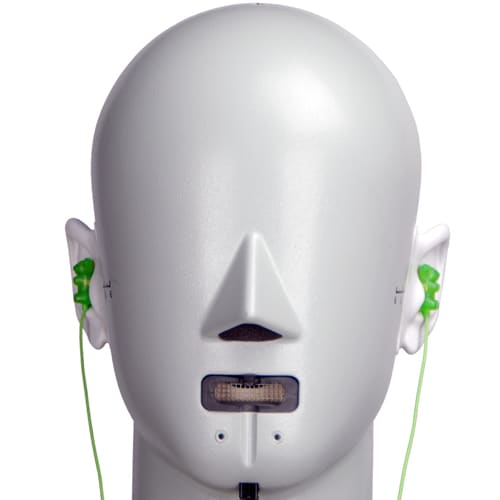
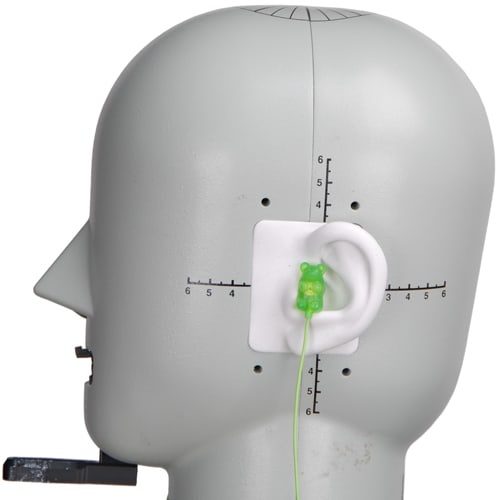
Speakers
{{section_header}}{{section.name}}{{/section_header}}
Here we see the speaker element, guarded by a thin plastic-like substance to make sure there's as little barrier to the driver as possible. This is probably the appropriate time to tell you that the driver of the Tesla series headphones from Beyerdynamic is built off of a slightly different technology than what you'd find in most other headphones, as the T1 is purported to generate 1.2 Tesla of magnetic field density (a much stronger magnetic field than that of a neodymium magnet). The thought behind this one is that the stronger the magnet, the fewer voice coils you have to use, which in turn means a lighter driver, which then means it can move quicker (meaning more clear, precise sound).
Back
{{section_header}}{{section.name}}{{/section_header}}
The semi-open back of the {{product.name}} is guarded by a rather dense metal mesh, complete with a subdued Beyerdynamic logo.
Band
{{section_header}}{{section.name}}{{/section_header}}
Atop the Beyerdynamic powerhouses sit the band: a leather and padding ensconced metal strip that while basic, provides a good level of comfort.
Cable
{{section_header}}{{section.name}}{{/section_header}}
Though a bit cumbersome, the 9.6 foot cable of the {{product.name}} is extremely robust, as the cable itself is very thick, and the wire is very big.
The monster cable of the {{product.name}} ends in a straight, 1/4th inch plug, which should be fine, given that you're going to need an amp to properly drive these monsters.
Like the cable itself, the cord guards are very robust, made of a thick rubber. These won't let you down.
In the Box
{{section_header}}{{section.name}}{{/section_header}}
The {{product.name}}s are packaged with your headphones, and a giant aluminum sarcophagus to place these titans in for transport.
Durability
{{section_header}}{{section.name}}{{/section_header}}
These cans are durable, there's no question about it. Though they are open-backed (and therefore their electronics are less well-protected against the elements), their extremely robust cable and their metal casing make these cans more resemble a tank than a pair of sensitive electronics.
Aesthetics
{{section_header}}{{section.name}}{{/section_header}}
We're fans of the simple, clean, industrial look of the {{product.name}}s. Not only are they easy on the eyes, but they also have a more or less classic look to them that doesn't scream: "Hey, look at me! I'm valued at well over $1,000!"
Frequency Response
{{section_header}}{{section.name}}{{/section_header}}
Before settling on these results, we tested the {{product.name}}s several times, over and over again to make sure our results were repeatable and accurate, and like we found with another model in the new Tesla line, there are some oddities with the new drivers.
If you've read the Beyerdynamic DT 990 PRO review, this frequency response will look very familiar to you. Notice how these cans seem to slightly emphasize the bass frequencies and the short range in the 8-10kHz area; it's a common trait we've seen in many Beyerdynamic headphones, but the {{product.name}} stay well within our ideal limits here. You may notice some sibilant sounds and the attack on kick drums are emphasized a little bit, but they won't be overwhelming.

Click here for more information on our frequency response test.
Distortion
{{section_header}}{{section.name}}{{/section_header}}
One thing we didn't expect to see when testing the {{product.name}}s is the level of distortion we recorded over repeated tests. If you take a gander at our chart below, you'll notice that there's a general distortion level that hover just under the 1% mark, while you won't hear it, is very atypical of high-end, or even mid-range headphones, which have next to none.
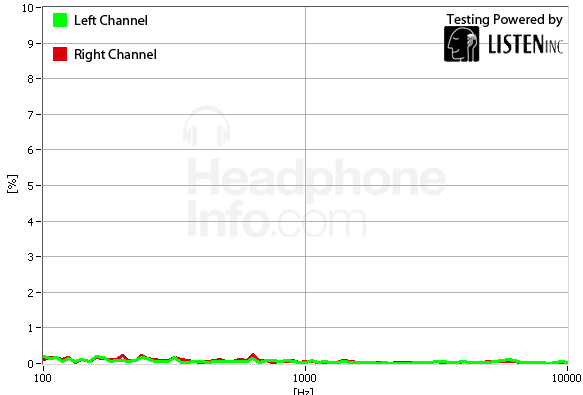
Click here for more information on our frequency response test.
Tracking
{{section_header}}{{section.name}}{{/section_header}}
The tracking was a bit wonky for the {{product.name}}s, but nothing that ever reaches an audible preference in one channel or another. We typically don't see this kind of tracking issue from the high-end flagship headphones, so this is a bit of a head-scratcher.
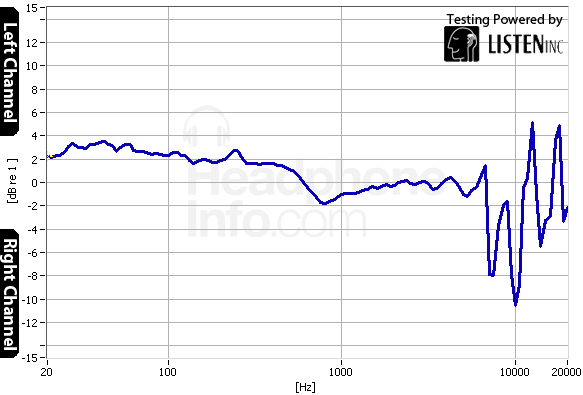
Click here for more information on our frequency response test.
Isolation
{{section_header}}{{section.name}}{{/section_header}}
Due to the fact that these cans were made with a semi-open back design, it's not surprising that these cans simply do not isolate you from the outside world. It's quite alright though: this is intentional, as the semi-open backs give you an open soundstage, without any teeny tiny echoes that some closed-back headphones have the habit of giving you.

Click here for more information on our isolation test.
Leakage
{{section_header}}{{section.name}}{{/section_header}}
Unsurprisingly, these cans leak sound like crazy. They're not a good option if you'd like to keep your high-fidelity Hannah Montana FLACs a secret from your partner or roommates.
Click here for more information on our leakage test.
Maximum Usable Volume
{{section_header}}{{section.name}}{{/section_header}}
The {{product.name}} has a maximum usable volume of 117.71dB, but we urge our listeners to take our word for it and never actually try to listen at that volume. Not only is it dangerous, but you could permanently damage your hearing, and that's a very sad thing for an audiophile to endure.
Click here for more on our maximum usable volume test
Short-Term Use
{{section_header}}{{section.name}}{{/section_header}}
Though comfort sections are largely subjective, as all people have different heads, we feel confident in telling you that the plush ear pads of the {{product.model}}s will provide for a high level of comfort in your listening sessions. Though the ear cups could not fit our ears inside the padding all the way, others in the office reported a very comfortable listening experience. After all, the ear pads are velour.


Extended Use
{{section_header}}{{section.name}}{{/section_header}}
Over a period of 6 hours, the comfort level didn't change much, except for the band digging in a little bit. Minor re-adjustments fixed this issue, so the {{product.name}}s net the same score here.
Customizability
{{section_header}}{{section.name}}{{/section_header}}
Aside from different band adjustments, there is almost nothing you can do to customize your {{product.name}}s without voiding a warranty (should you get one). That being said, why would you want to?
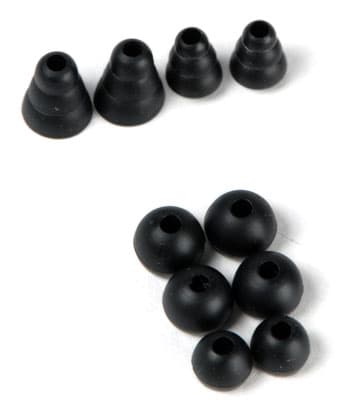
Cable Connectivity
{{section_header}}{{section.name}}{{/section_header}}
The {{product.name}}'s cable ends in a straight 1/4th inch plug, and that's all. Seriously, there is no adapter for systems that have only a 1/8th inch (3.5mm) jack. Given that these headphones work best with an amplifier (an impedance of 600 ohms pretty much guarantees this), it's not terribly surprising that Beyerdynamic would elect to use a connection that is usually exclusive to high-end systems.
Portability
{{section_header}}{{section.name}}{{/section_header}}
Don't take these headphones places. Maintenance and issues with the semi-open back aside, the cumbersome cord, high likelihood of damage when presented with the outside world and the lack of a 1/8th inch jack makes it pretty much impossible to take these on the go, and you shouldn't anyways. If you absolutely must transport these to work or a studio, the {{product.name}}s come with an aluminum chest to move these cans about. Be sure to use that, and not shove these in a bag.
Maintenance
{{section_header}}{{section.name}}{{/section_header}}
If there is a true Achilles' heel to the {{product.name}}, it's their maintenance capabilities. When you plunk down over $1000USD for a pair of headphones, you're going to want some way to protect that investment. Without replaceable cables or other options to make these cans more durable, the {{product.name}}s' life expectancy is quite a bit shorter than some consumers would like to see.
To their credit, we haven't seen beefier cables, plugs, or cord guards on any other headphones this year, and it would take bolt cutters or a similar shearing force to damage them. This is good, because should the unlikely event of their breakage happen, you'll be faced with some hard choices to make.
Design
{{section_header}}{{section.name}}{{/section_header}}
Beyerdynamic seems to have designed the {{product.model}}s with the hallmark design of its older cans in mind. As you can see, many of the design elements are the same, even if they differ slightly in material and build quality. We like the {{product.name}}s more, if only for the clean, industrial look and metal casing.
Frequency Response
{{section_header}}{{section.name}}{{/section_header}}
Once you reach a certain level of performance, the frequency response of certain pairs of headphones become much more a matter of taste than anything, as demonstrated here: both frequency responses are remarkably similar, though the DT 990 PROs don't have the small ranges of underemphasis that the {{product.model}}s have, and the {{product.model}}s don't overemphasize some frequencies as wildly as the DT 990 PROs do.
Distortion
{{section_header}}{{section.name}}{{/section_header}}
This one goes to the DT 990 PROs, as the {{product.name}}s for whatever reason have a measurably higher level of distortion.
Tracking
{{section_header}}{{section.name}}{{/section_header}}
Again, the the DT 990 PROs outperformed the {{product.model}}s, as they maintained near-perfect tracking for a much wider range of frequencies than did the pricy T1s.
Isolation
{{section_header}}{{section.name}}{{/section_header}}
Neither of these sets of cans were made to attenuate sound, so this really isn't much of a relevant comparison to make.
Comfort
{{section_header}}{{section.name}}{{/section_header}}
If only for the better band, the {{product.name}}s are the more comfortable headphones, as the build type is similar between these two sets of cans, though the {{product.name}} has much more sturdy materials. Your mileage may vary, but the band of the DT 990 PROs tend to dig into the skull a bit more than the {{product.name}}s do.
Verdict
{{section_header}}{{section.name}}{{/section_header}}
Though the {{product.name}}s are impressive in their own right, you really can't beat the value you get when you pick up the Beyerdynamic DT 990 PROs. While they aren't objectively better than the {{product.model}}, they do offer astounding performance for the price, and where the {{product.model}}s cost well over $1000 more than the DT 990 PROs, it's a little hard to justify the extra cost at this point until the new driver technology matures a bit and Beyerdynamic tweaks their new cans to perfection.
Design
{{section_header}}{{section.name}}{{/section_header}}
These are two very different sets of headphones. Where the {{product.name}}s have fixed cables, metal mesh, and a traditional cup design, the HD 800s have removable/replaceable cables and a design that looks like it came out of a science fiction movie. While the cables of the {{product.name}} are extremely durable, not having a way to replace them should the worst happen is a big setback at its price point.
Frequency Response
{{section_header}}{{section.name}}{{/section_header}}
Users looking for what a studio headphone should sound like, pay attention: the HD 800s have an extremely flat response outside of the very slight emphasis of bass and the spike at 8kHz. While the two frequency responses are very similar, the HD 800s do a better job of staying within our ideal limits, if only slightly.
Distortion
{{section_header}}{{section.name}}{{/section_header}}
The HD 800s blow the {{product.name}}s away here, as the general distortion issue is hard to justify at the price point the {{product.model}}s sit at.
Tracking
{{section_header}}{{section.name}}{{/section_header}}
Though the imperfections in the tracking of the {{product.name}}s are nigh inaudible, the HD 800s maintain a better tracking response. It's splitting hairs when the channel shifts are less than 2dB, but the difference is there.
Isolation
{{section_header}}{{section.name}}{{/section_header}}
Neither of these sets of cans were meant to isolate noise, so this comparison is largely moot. Don't buy headphones with open backs if you want to block out the outside world.
Comfort
{{section_header}}{{section.name}}{{/section_header}}
Where the HD 800s have very few if any issues in comfort, the {{product.name}}s have a band that can dig into your skull a bit as the total weight of the unit is quite high. For our Hindenburg-sized heads, the HD 800s were more comfortable, but users with smaller skulls will probably notice the Sennheisers sliding around more. If you have a smaller head, we recommend the fit of the {{product.name}}s over the HD 800s.
Verdict
{{section_header}}{{section.name}}{{/section_header}}
Beyerdynamic is a great headphone manufacturer, but the risks they took with lightening the drivers don't seem to have paid off just quite yet. Though the flagship headphone of the Tesla lineup is certainly impressive, it falls just short of directly competing with the HD 800s. Though they are a couple hundred dollars cheaper than the Sennheisers, if you're going to be spending one and a half grand on a pair of headphones, chances are good that the difference of a couple hundred isn't going to matter much to you. Add in the fact that you can protect your HD 800s by being able to replace cables if they break, and the fact that they are lighter than the {{product.name}}s, and you have a pair of marginally superior headphones.
Design
{{section_header}}{{section.name}}{{/section_header}}
We don't need to tell you that the design of in-ears is radically different than that of open-backed over ears, but some of the differences provide different strengths and weaknesses for performance. For example, in-ears are far better at isolation, but they don't offer the same open soundstage or sound quality that open-backed over-ears do. You'll just have to take these points into consideration and decide for yourself.
Frequency Response
{{section_header}}{{section.name}}{{/section_header}}
Both frequency responses are a thing of beauty: the {{product.name}}s with their flat but slightly emphasized bass and high frequencies, and the mc5s with their mostly flat overall response. Both offer great performance here, but purists will probably side with the {{product.name}}s on this one.
Distortion
{{section_header}}{{section.name}}{{/section_header}}
The mc5s offer an extremely low distortion level, whereas the {{product.name}}s have that inexplicable 1% level of general distortion. It's not a huge deal and it isn't audible, but it is there, and audiophiles will be quick to point out that it isn't as perfect as other headphones.
Tracking
{{section_header}}{{section.name}}{{/section_header}}
The mc5s have almost perfect tracking, whereas the {{product.name}}s do not. It's not as big of a difference as the charts make it look, so don't read into this one too much. You'll barely notice it if ever.
Isolation
{{section_header}}{{section.name}}{{/section_header}}
Here's easily the biggest difference between the {{product.name}} and the mc5s: isolation. While the {{product.name}}s don't attenuate much sound at all (they weren't really designed to anyway), the mc5s will make the world around you simply disappear with its ~35dB reduction in ambient noise. The mc5s offer better noise reduction than most earplugs do, so if isolation is your thing, definitely give these a look.
Comfort
{{section_header}}{{section.name}}{{/section_header}}
If you're looking for the most comfortable of the two, the {{product.name}}s win hands-down. Not only do the mc5s press rather forcefully against your ear canals if you have medium-to-small ears, but the {{product.name}}s are lined with velour padding. It's not hard to pick a preference in terms of comfort.
Verdict
{{section_header}}{{section.name}}{{/section_header}}
If you're looking for audio quality, it's hard for the mc5s to compare to such a high-end set of cans like the {{product.name}}s. That being said, the mc5s don't even break $100 on the market, while the {{product.name}}s break $1000. For the price you can't really go wrong, but different listeners have different needs: comfort is a huge issue for the mc5s.
Design
{{section_header}}{{section.name}}{{/section_header}}
On-ear headphones are quite a bit different than open-backed over-ears namely in that they use smaller drivers and can pretty much go anywhere without having to worry as much about a humid day destroying them, or losing a $1000+ investment. The P5-MFIs are slick-looking and durable on-ears with the option of re-cabling should something happen to them, but they don't offer anywhere near the sound quality that the {{product.name}}s will give you for your investment.
Frequency Response
{{section_header}}{{section.name}}{{/section_header}}
When compared, it's easy to see the advantages offered by the {{product.name}} over the Bowers & Wilkins cans. With a flatter frequency response that doesn't overemphasize any range too badly, where the P5-MFIs tend to overemphasize bass frequencies.
Distortion
{{section_header}}{{section.name}}{{/section_header}}
Though it is true that both sets of headphones have their own troubles with distortion, the P5-MFIs technically have less, though their closed backs leave them prone to tiny echoes.
Tracking
{{section_header}}{{section.name}}{{/section_header}}
The tracking response of the {{product.name}} might be more erratic, but the swings in the tracking for the P5-MFIs are more wild. The {{product.name}}s take this one.
Isolation
{{section_header}}{{section.name}}{{/section_header}}
By virtue of the fact that they have closed backs, the Bowers & Wilkins on-ears attenuate a bit more noise than do the {{product.name}}s. Still, these are headphones intended for two very different environments, so this may be less of a concern if you're looking for a pair of headphones for use at home.
Comfort
{{section_header}}{{section.name}}{{/section_header}}
Despite the fact that the {{product.name}}s may dig into your skull a bit after a few hours, they will not shift on you like the P5-MFIs are prone to do. Also, is velour ever less comfortable than leather? We didn't think so.
Verdict
{{section_header}}{{section.name}}{{/section_header}}
It's easy to point out that the {{product.name}}s have much better audio quality than the P5-MFIs, but really, that's to be expected given the difference in price point. Still, the B&W headphones do allow you to venture outside with your cans, and they are far easier to maintain should something break. In the end the decision is up to you, but there are clear advantages and disadvantages to both.
Conclusion
{{section_header}}{{section.name}}{{/section_header}}
Such is the misfortune of the pioneer that they are often not the ones to perfect their contributions. While the {{product.name}}s are certainly impressive in many regards, their distortion level, tracking issues, and pricetag are a bit hard to swallow. Though the new type of dynamic driver brought to the table by Beyerdynamic is quite interesting (and certainly seems to live up to the hype that it enables the drivers to move quicker, and therefore produce clearer sound), it is very new and apparently not as polished as it should be at its price point.
The poor marks for distortion is fairly mystifying, as Beyerdynamic typically does not field models with much distortion at all. That's not to say that it's quite at the level of being audible, but it's definitely not how a pair of $1200 headphones should sound.
Don't take this review to mean that these are bad headphones (they're not; their frequency response is great), but what we've seen from the Tesla line so far is that they perform well for the most part, but have several oddities in their audio performance that might give audiophiles pause in buying them. For the T70s, it was a strange underemphasis in the high end, and for the T1s, it was a somewhat higher than normal distortion level. Keep in mind that it will be very hard to hear these blemishes as a human, but having recording equipment allows one to see things like this.
Performance issues notwithstanding, it's very easy to be harsh on headphones with a $1000+ pricetag, so we'll leave our final conclusion at this: much like a huge number of other headphones on the market, you may want to shop around to see if you can get a better deal if you're looking to buy these cans. It's just the smart thing to do. Still, if you're looking for a pair of mixing headphones, there are other headphones out there that are far more polished and durable than the {{product.name}}s for only a few hundred more.
Meet the tester
A seasoned writer and professional photographer, Chris reviews cameras, headphones, smartphones, laptops, and lenses. Educated in Political Science and Linguistics, Chris can often be found building a robot army, snowboarding, or getting ink.
Checking our work.
Our team is here to help you buy the best stuff and love what you own. Our writers, editors, and experts obsess over the products we cover to make sure you're confident and satisfied. Have a different opinion about something we recommend? Email us and we'll compare notes.
Shoot us an email

